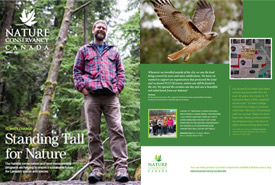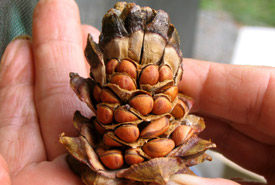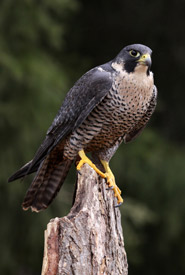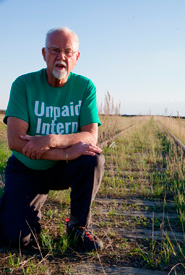Observations on the first issue of NCC Magazine

NCC Magazine Spring 2016 issue (Photo by NCC)
Recently a staff member at the Nature Conservancy of Canada (NCC) regional office for Saskatchewan asked me if I would be interested in receiving a complimentary copy of a new magazine as a thank you for contributing a few guest blogs to Land Lines. Since I’m an omnivorous reader of everything (treatises on quantum mechanics excepted), I said, “Sure!”
An editorial coordinator explained in an email that the magazine is distributed to NCC donors, supporters and partners, and is also handed out at trade shows and other events. And if I liked what I read, “… might I consider writing a blog post about it?” (Insert smiley face here.)
How could I resist? So, here goes. The Nature Conservancy of Canada Magazine is a quarterly 20-page, full-colour publication. It replaces The Ark newsletter, which some of you donors and supporters, may be familiar with.
Now, I do have a few qualifications to bring to this review, having written for many magazines, most of which have moved to the digital world or gone to Periodical Heaven. I can also tell good writing from bad. However, my knowledge of magazine layout is of the, “I may not know much about layout, but I know good layout when I see it,” kind.
Fortunately, the magazine is easy to like. Plenty of white space? Check. Attention-getting and relevant photos? Check. Informative and well-written content? Check.

Whitebark pine seeds in cones (Photo by Don Pigott)
The feature article, “Bracing for Change,” very quickly establishes the theme that runs throughout the entire magazine: climate change, and specifically how NCC’s efforts can help mitigate the effects of climate change and help all species – including humans – better adapt as the climate continues to change. The article, written by freelance writer Allan Britnell, focuses on how climate change is affecting the Darkwoods Conservation Area in southeastern British Columbia, as seen through the eyes of NCC Project Manager Adrian Leslie.
The article also mentions how NCC staff have made changes to land management practices on tall grass prairie properties, and are planning for changes on Prince Edward Island as sea levels rise. Overall, it’s a reminder of the diversity of landscapes that NCC manages across Canada, and the many different challenges posed by climate change.

Peregrine falcon (Photo by Chris Hill)
The magazine also has a good news story about the peregrine falcon, short items about Conservation Volunteers events, project updates from across the country, and a fascinating yarn of how descendants of William Van Horne have donated to NCC a square mile of land in Newfoundland that had been granted to him in 1900.
As a change of pace, short items identify the basic tools used by Conservation Volunteers, and NCC President and CEO John Lounds lists five essential bits of gear he packs for his annual birding trip to Pelee Island, Ontario.
Finally, I had a personal interest in reading a Q&A with Lorna Crozier, a wonderful writer born and raised in Swift Current, Saskatchewan, one of my favourite places. She recently collaborated with photographer Ian McAllister on a poetry collection, The Wild in You, about her trip to the Great Bear Rainforest. In the Q&A she attempts to describe the moments of awe and wonder she experienced in the rainforest, and her struggle to put those moments into words; something I think all people who love and respect nature can relate to.
To sum up, the new NCC Magazine is a worthy successor to The Ark. I particularly appreciated the main feature-length article discussing the effects of climate change at different locations across the country. The current conventional wisdom is that articles and news items must be short, to serve pressed-for-time readers. However, as a writer I welcome the chance to work on projects where I can add contextual information and fascinating details that are often sacrificed for the sake of brevity.
So, my advice to the NCC editors would be to aim for at least one feature-length piece in future issues, and for readers to take the time to savour them.
The summer issue of the NCC Magazine will be available in July. Donors who contribute $25 or more will automatically start receiving the publication for one year. Find out more >


